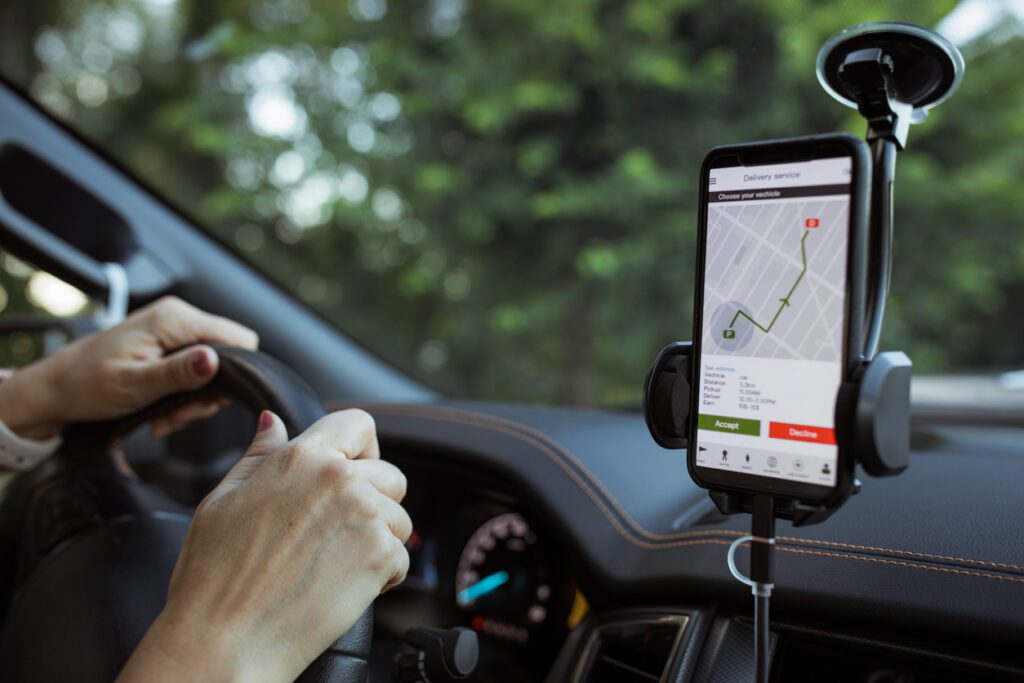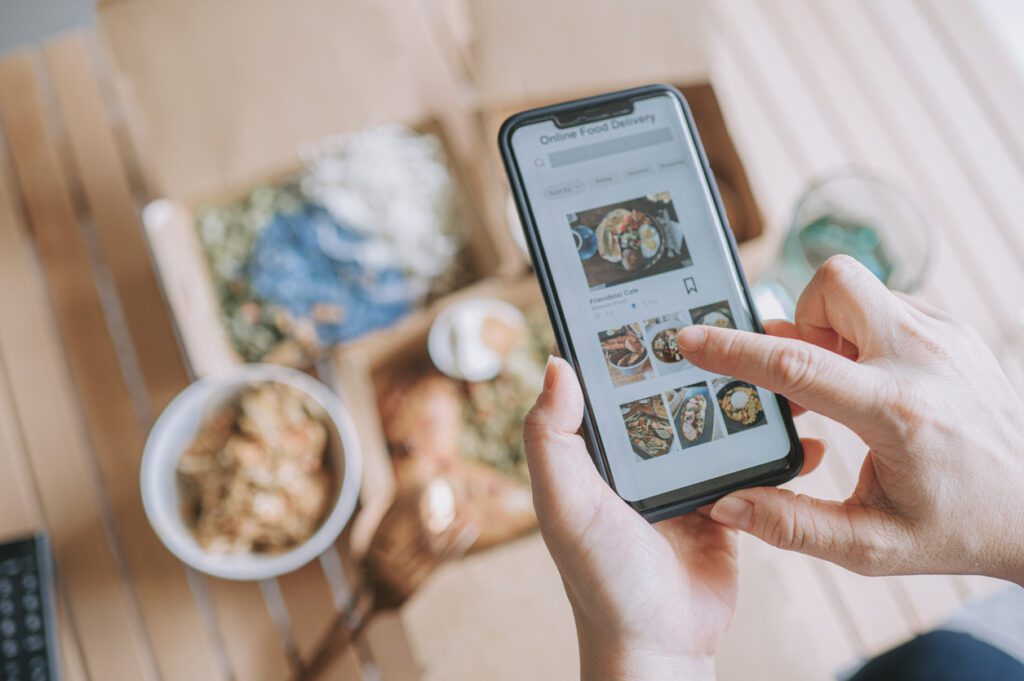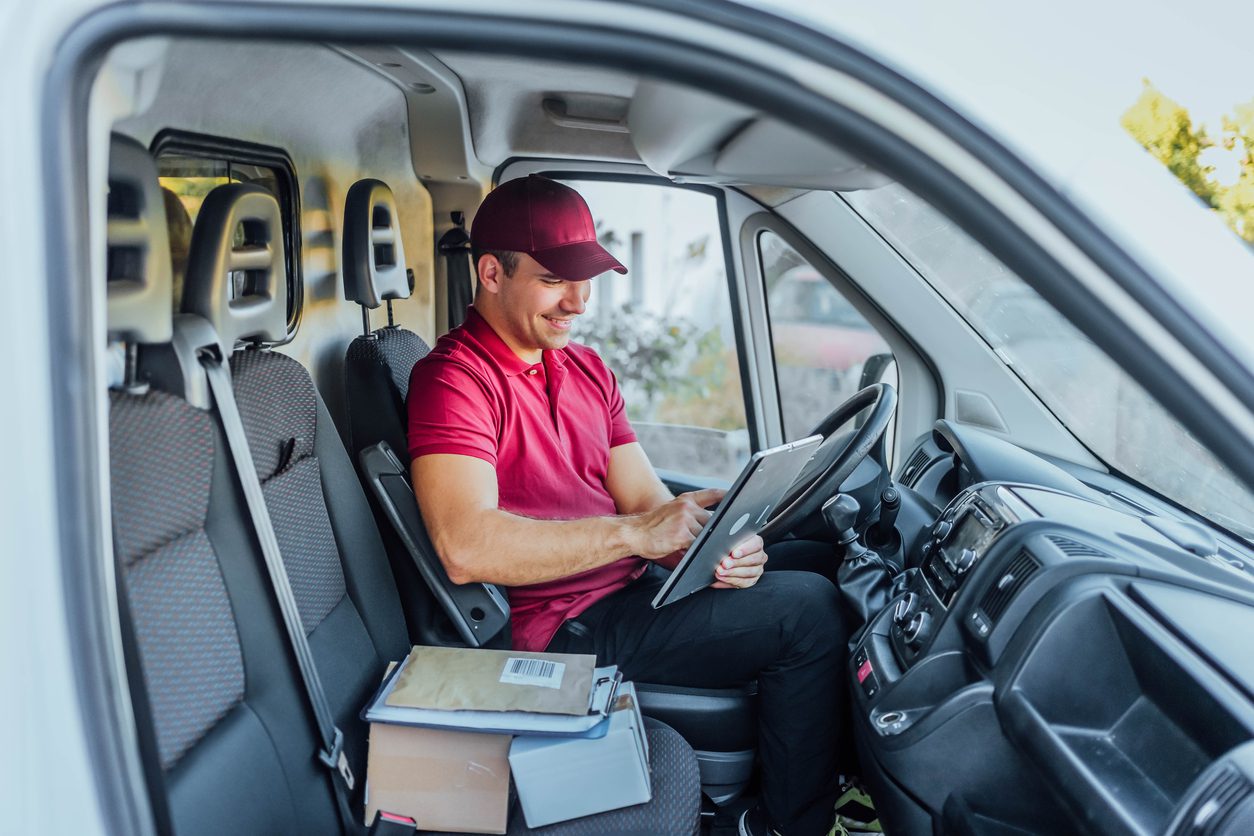Mobile Driver Apps: Seamless Route Optimization Solutions for the Local Food Supply Chain
Route optimization software offers the most time- and cost-efficient strategy for transporting shipments between different locations. Modern route optimization isn’t just about finding the shortest route to all delivery destinations. It also incorporates factors like time windows for deliveries, food freshness, driver availability, traffic, and more. Calculating all those factors by hand introduces the potential for a high rate of human error. Additionally, it makes it more difficult to deliver produce, fresh meat, and a host of other items in a timely and effective manner.
Mobile driver support apps with built-in route optimization and integrated inventory and order systems can go a long way toward simplifying the route optimization process. This technology simplifies routes, noting pick-ups or returns, enables easy fulfillment communications with customers, and provides detailed turn-by-turn directions as needed. That can mean reduced delivery times, improved customer satisfaction, and enhanced operational efficiency.
The Basics of Route Optimization
Understanding route optimization is essential to maximizing the potential for food deliveries for farmer’s markets, boutique grocers, co-ops, and so much more.
What Is Route Optimization for Food Delivery?
Route optimization takes into consideration what hours businesses and co-ops are open to receive deliveries, customer preferences, and even local traffic patterns to calculate the best delivery schedule. Route optimization software solutions also incorporate delivery returns. This allows drivers to pick up items that need to come back to the original location as they go through their schedule for the day. Ultimately, route optimization helps reduce fuel costs while ensuring that your brand meets customer expectations.
Why Is Route Optimization Essential in the Food Delivery Industry?
The food delivery industry has several unique demands that can make route optimization even more essential. You aren’t just worried about reducing fuel costs and improving delivery times. Food delivery brands must manage perishable goods with time-sensitive demands, ensuring that they arrive on time and in good condition.
Furthermore, route optimization helps those brands stand out in a competitive and fast-paced market. Manual routing not only means slower delivery times. It can also mean a worse experience and less communication with customers. As customer expectations for ETA accuracy increase, even in smaller or local delivery setups, food delivery brands must be able to meet those expectations.
The Core Benefits of Using Mobile Driver Apps for Food Delivery

Using mobile driver apps for food delivery across your local food supply chain offers many essential benefits.
Improved Delivery Times
Mobile driver apps keep drivers connected to what’s really going on around them. They get real-time traffic updates that allow them to avoid delays, coupled with turn-by-turn directions that can reroute them to avoid those areas of heavy traffic or change delivery schedules according to potential changes in customer needs. Mobile apps also help ensure that drivers stick to optimal routes with live updates that let the company know where they are at any given time. This includes when they get stuck, when they make a stop, and more.
Cost Savings
Mobile delivery apps offer potential cost savings in several ways. They reduce fuel consumption through smarter routing and cut fleet maintenance costs by decreasing unnecessary mileage. In addition, they help prevent unnecessary hours spent on the road, which can help decrease labor costs.
Enhanced Customer Experiences
For local boutique grocers, co-ops, farmers markets, aggregate food hubs, and other small, local food supply chain brands, the customer experience is essential. Today’s customers are highly focused on that experience, and are more likely to rely on brands that deliver it. An estimated 50 percent of customers will switch brands after one bad experience with a brand. And 60 percent of customers have chosen a brand based on the experience they expected to have.
Using mobile apps for drivers for food delivery helps provide that essential experience. Customers receive accurate scheduling delivery notifications, so they can keep up with exactly where their package is and when it’s expected to arrive. Furthermore, mobile delivery apps minimize missed deliveries and late arrival complaints, ultimately offering significant improvements to customer satisfaction. This customer experience management in the local delivery solution is key to keeping customers with your brand and improving their overall satisfaction.
Key Features That Transform Food Delivery Logistics
Having the right features in your mobile driver app can make a huge difference in overall performance and functionality. As you’re choosing the right route optimization software solution for your brand, make sure you’re looking out for these options.
Dynamic Route Adjustments
Dynamic route adjustments allow you to adapt to last-minute order changes or cancellations with ease. Drivers can quickly see any changes that need to be made to the route and adapt accordingly—and the app handles the changes for them, so they can focus on completing their route successfully. Dynamic route optimization also re-optimizes routes on the go to maintain efficiency, accounting for changes in customer needs or delivery expectations.
Integrated Mapping Tools
Integrated mapping solutions leverage Google Maps and other mapping systems for precise navigation. They provide turn-by-turn directions that get delivery drivers exactly where they need to be, when they need to be there. Furthermore, they engage in real-time traffic monitoring that adapts the route according to wrecks, traffic jams, or weather conditions that could potentially slow down deliveries.
These solutions also offer cost predictability because they are a built-in integration, not a standalone app, which may cost more per route optimized and increase in cost as your business grows.
Mobile-Friendly Driver Support
Easy-to-use interfaces are ideal for tracking delivery progress. Drivers get the support they need, right in the palm of their hand. The app includes tools for confirming stops and updating route status, which not only ensures that drivers can keep up with their requirements but also that customers know where their apps are at any given time.
Analytics for Performance Improvement
Mobile food delivery driver apps collect data on delivery times and routes that allow brands to streamline future operations. They focus on the KPIs that matter, allowing companies to identify patterns that can help them reduce bottlenecks and inefficiencies. Ultimately, that can mean substantially enhanced improvement for deliveries across the board.
Overcoming Food Delivery Challenges With Mobile Driver Apps
Mobile driver apps can go a long way toward helping local food supply chain brands deal with the challenges they face every day.
Challenge #1: Managing High-Volume Deliveries
Many brands along the local food supply chain deal with large delivery requirements, especially during peak ordering times. As produce rolls in off the farms during harvest season or customers turn to local brands for more of their needs, it can be difficult to ensure efficiency across those high-volume deliveries. Mobile driver apps help companies and drivers balance multiple stops across urban and suburban areas, ensuring that every customer gets their delivery on time.
Challenge #2: Maintaining Freshness of Perishable Goods
As a local food brand, freshness is a key concern. You want your deliveries to get to your customers as soon as possible, not only to preserve food quality, but to maintain food safety requirements. Not only can mobile fulfillment solutions for ecommerce help ensure that those goods get to customers faster, allowing them a larger window to use those goods (and allowing growers to pick them during periods of peak ripeness, where relevant), they can provide advance notifications to customers to ensure quick hand-offs and make sure that deliveries aren’t sitting outside, unprotected, for long periods.
Challenge #3: Responding to On-Demand Orders

Whether you’re delivering fresh food to individual customers or filling large orders for local restaurants or shops, there are times when food brands must quickly adapt their delivery schedules to provide the solutions customers need, when they need them. Local delivery route optimization software is designed to provide real-time scheduling for last-minute orders, getting those customers on the route, and enhancing overall satisfaction. Dynamic route updates in mobile apps for same-day delivery add stops seamlessly, without increasing frustration on the part of drivers or employees.
Driving Operational Excellence in Food Delivery Businesses
Omnichannel fulfillment software is ideal for improving operational efficiency across food delivery businesses, allowing them to more effectively reach their goals.
Automation for Efficiency
Automation has become increasingly common across multiple industries for a number of reasons—not least of which is overall efficiency. Local delivery route optimization software eliminates manual dispatch procedures with automated solutions. That helps reduce planning time and allows representatives to focus primarily on customer service, making automated dispatch and delivery apps key for ultimate success.
Fleet Optimization
With delivery management software, food brands can rely on routing solutions that maximize vehicle capacity and reduce operational costs. In many cases, that means reducing the number of vehicles necessary to effectively manage the fleet. Furthermore, it can minimize idle time for drivers, allowing companies to keep their operations streamlined and focus man-hours on the places where they’re really needed.
Improved Communication Across Teams
With effective route optimization software, you aren’t just getting solutions that help with route management and delivery times. You also create seamless coordination between logistics managers, drivers, and customers. This develops a customer-focused delivery management platform with centralized updates that can promote transparency and reduce the risk of miscommunication. Not only does that lead to happier customers, it ensures that logistics managers have a big-picture look at how goods move through the system and what’s going on with deliveries at any given time.
Real-World Benefits Experienced by Food Delivery Businesses
Using effective last-mile delivery tracking apps focused on route optimization and customer service allows brands to see real-world benefits.
Faster Delivery and Increased Customer Loyalty
Many brands, on turning to local delivery route optimization software, find that they experience significant changes in on-time delivery rates. Customers aren’t left worrying about where their deliveries are, when they can expect them to arrive, or what condition their items will be in when they receive them—a key concern for food deliveries. Instead, they get their goods when they expect them, in great condition, and that can mean increased customer retention rates across the board.
Cost Reduction Successes
Reducing costs is key for many brands that rely on local deliveries, especially in an age when costs are rising in many key areas. Using automated dispatch and delivery apps can reduce expenses in fuel, labor, and maintenance, ultimately saving considerable money compared to manual routing solutions.
Data Utilization for Continuous Improvement
The delivery analytics provided by local delivery route optimization software that includes real-time delivery tracking tools can go a long way toward allowing local food brands to make improvements to their processes and solutions. That can include:
- Knowing where and when to add delivery drivers
- Preparing ahead of time for peak seasons, including both responsiveness to increases in customer orders and increases in brand output due to harvest times
- Establishing ideal routes
- Predicting potential delays
- Identifying bottlenecks that could interfere with effective deliveries
- Ensuring freshness and identifying challenges that could prevent customers from getting their deliveries in good condition
Mobile fulfillment solutions for e-commerce aren’t just focused on immediate optimization. They also allow for long-term optimization solutions that allow for continuous improvements and adaptations as situations change.
The Future of Route Optimization in Food Delivery
Route optimization in food delivery isn’t static. Local delivery route optimization software continues to offer new options that help customers achieve their goals.
The Adoption of Emerging Technology
Increasingly, last-mile delivery tracking apps are using AI-powered tools for even faster and more accurate route planning. AI tools are growing in popularity and effectiveness, allowing them to provide better solutions for the brands that use them. In addition, local food brands are integrating IoT technology to provide real-time fleet tracking and updates, from determining exactly where drivers are to utilizing devices on their trucks to keep up with maintenance needs.
The Competitive Edge of Early Integration
Investing in route optimization software, including mobile driver apps, today is key for long-term success. Today’s customers expect convenience and communication. Tomorrow’s customers may expect even more integrated solutions. By adopting these technologies today, local food brands can get ahead of their competitors and start delivering on customer expectations more effectively.
Predictions for Industry Transformation
Automation and data-driven delivery systems aren’t just buzzwords. They’ve become an increasingly important part of the industry. The route optimization software market is growing, and brands that fail to get on board will find that they aren’t able to deliver the same solutions as their competitors. The future of food delivery relies on meeting those vital customer expectations.
Furthermore, integrating these solutions is vital for reducing costs and keeping the business running smoothly—an increasingly important element of your final delivery solutions in an age when costs are rising across the board.
Explore Our Route Optimization Software Options
Mobile driver apps are key to seamless route optimization and ensuring that your business can meet consumer demands. Adopt these tools for increased efficiency and customer satisfaction, and watch your brand reap the benefits. Mobile driver apps are a must-have solution for staying competitive in the fast-paced food delivery industry—and those solutions are at your fingertips. Contact us today to learn more about how our mobile driver delivery apps can help you achieve your goals.
